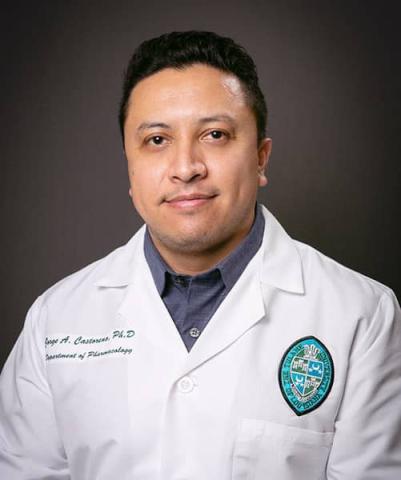Jorge A. Castorena, PhD
Assistant Professor

Areas of Expertise
Biography
Academic Training
- Bachelor of Science in Physics: Universidad de Guanajuato, León, Guanajuato, México (2007)
- Master of Science in Physics: Universidad de Guanajuato, León, Guanajuato, México (2009)
- Doctor of Philosophy in Bioengineering: University of Missouri, Columbia, MO, USA (2014)
- Postdoctoral Fellowship: Laboratory of Dr. Michael J. Davis, University of Missouri, School of Medicine, Columbia, MO, USA (2015-2019).
Faculty Appointments
- Research Assistant Professor (Non-Tenure Track): University of Missouri, School of Medicine, Department of Medical Pharmacology and Physiology, Columbia, MO, USA (2019-2020).
- Assistant Professor: Tulane University, School of Medicine, Department of Pharmacology (2020-Present)
Research
The lymphatic system comprises the primary mechanism for the return of interstitial fluid from the tissues back to the central veins. The lymphatic networks also serve as the major trafficking system for immune cells, the primary mechanism by which dietary lipids are absorbed, and the primary route for dissemination of cancer metastases. Our main goal is to investigate the mechanisms through which the lymphatic system becomes dysfunctional and how this contributes to the onset and development of cardiovascular diseases. Deficiency of the lymphatic system can result in abnormal accumulation of fluid, causing lymphedema. Lymphedema can be associated with genetic malformations of the lymphatic vasculature, increased permeability through the lymphatic wall, impaired contractility of lymphatic vessels, and/or incompetent lymphatic intraluminal valves. Our current research focuses on the understanding of the interaction between obesity and lymphatic dysfunction; however, we are also interested in learning about the effects of aging in the lymphatic system function, and how this may impact other systems. Our lab utilizes a wide range of state-of-the-art techniques including: simultaneous multi-channel confocal microscopy to study intracellular calcium events in the lymphatic vessel wall, pressure myography on isolated lymphatic vessels from animal models and humans, lymphatic primary cell cultures, and electron microscopy among others. We also devote significant efforts towards developing novel techniques in physiology and software tools for the automated processing and analysis of data and images.
